Universities in State of Minnesota
-
 from 30438.00 $ / year
from 30438.00 $ / year -
 #151 out of 439 National Universities
#151 out of 439 National Universities USAMinneapolis, MinnesotaCurrently watching: 2from 19598.00 $ / year
USAMinneapolis, MinnesotaCurrently watching: 2from 19598.00 $ / year -
 #185 in the national rating
#185 in the national rating USAMinneapolis, MinnesotaCurrently watching: 1from 15000.00 $ / year
USAMinneapolis, MinnesotaCurrently watching: 1from 15000.00 $ / year -
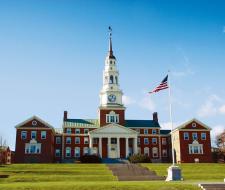 #25 in National Liberal Arts Colleges
#25 in National Liberal Arts Colleges USAMinneapolis, MinnesotaCurrently watching: 1from 20000.00 $ / year
USAMinneapolis, MinnesotaCurrently watching: 1from 20000.00 $ / year -
 #9 in National Liberal Arts Colleges
#9 in National Liberal Arts Colleges USAMinneapolis, MinnesotaCurrently watching: 1from 20000.00 $ / year
USAMinneapolis, MinnesotaCurrently watching: 1from 20000.00 $ / year -
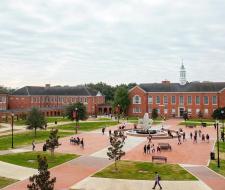 #345 in National Universities
#345 in National Universities USAMinneapolis, MinnesotaCurrently watching: 1from 15000.00 $ / year
USAMinneapolis, MinnesotaCurrently watching: 1from 15000.00 $ / year -
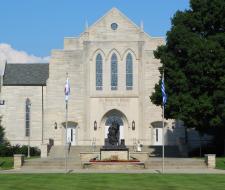 from 20000.00 $ / year
from 20000.00 $ / year -
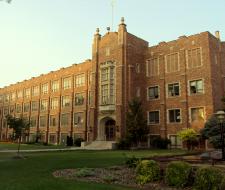 ranked #236 out of 439 National Universities
ranked #236 out of 439 National Universities USAMinneapolis, MinnesotaCurrently watching: 2from 15000.00 $ / year
USAMinneapolis, MinnesotaCurrently watching: 2from 15000.00 $ / year -
 #269 out of 439 National Universities
#269 out of 439 National Universities USAMinneapolis, MinnesotaCurrently watching: 1from 35000.00 $ / year
USAMinneapolis, MinnesotaCurrently watching: 1from 35000.00 $ / year -
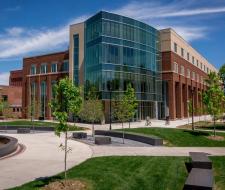 #21 in Regional Universities Midwest
#21 in Regional Universities Midwest USAMinneapolis, MinnesotaCurrently watching: 1from 15000.00 $ / year
USAMinneapolis, MinnesotaCurrently watching: 1from 15000.00 $ / year
The state of Minnesota is called the land of ten thousand lakes, there are more than 11 thousand reservoirs on the territory of the state with an area of 10 acres or more. Hot in summer and cold in winter, life is mostly concentrated in the so-called "sister cities", Minneapolis and St. Paul, united in an agglomeration. Minnesota is also called a hockey state. There are more than 200 higher educational institutions, mainly state-owned, although the primacy in fame and glorious achievements belongs to private ones. The state's economy is complex and multi-structured, including forestry, mineral extraction, agriculture, mainly crop production (but not only: every 11th turkey in the United States is grown in these parts). The high-tech sector is noticeable: a successful tax policy and a large share of the population with higher education have attracted the largest software developers to the staff.
Alternative destinations
Why are universities in Minnesota a good solution?
Higher education in the state is traditionally considered a strength. The state is called "good Minnesota", the mentality of local residents contributes to the formation of a welcoming and friendly, inclusive environment where everyone is welcome, including expats. Here are a few reasons to choose universities in Minnesota in order to get a higher education.
- Career prospects
Studying in Minnesota promises excellent career prospects: 28 Fortune 500 companies are located here, which promises huge opportunities in terms of internships and employment. The state's unemployment rate is 37% lower than the U.S. average, and those with a bachelor's degree in statistics find their first job in 4 months (compared to 7 on average nationally). 73% of companies in the region talk about a "talent shortage", they lack highly qualified personnel - 5 years ago, only 48% complained about a shortage (with the national average of 37%).
- Culture & Entertainment
Being a student is a fun time, and sister cities are a great place in this regard! Creativity, music and art are appreciated here, the city has dozens of theaters and museums, hundreds of restaurants and nightclubs, not to mention the wonderful nature, which gives a sea of opportunities for summer and winter outdoor recreation - from fishing, hiking and camping to snowboarding and skiing.
- Hospitality and openness
The two largest metropolises are a kind of socialist oasis in a capitalist paradise: the state provides many social guarantees, the offices of many NGOs and human rights organizations are located here, and active social work is carried out. 38% of Minneapolis residents and 31% of St. Paul residents in 2023 are first- or second-generation migrants.
- Networking
The state has the head offices of companies with a total revenue of over 600 billion USD, operating in such industries as finance, high technology, medicine, and biotechnology. Studies at a local university end in 8 out of 10 with an internship, often for a fee, to give them access to the impressive job opportunities offered by the alumni associations of the respective universities.
- Quality of life
You can't write off simple everyday joys either! In a number of rankings, Minnesota, especially its sister cities, demonstrate an excellent level of quality of social and public infrastructure, a high quality of life and a human development index comparable to the states of the East Coast of the United States. In terms of community medicine, Minnesota is among the top ten in the United States. According to Gallup, the state's student body consistently demonstrates one of the lowest levels of stress in the country, which is largely related to the safety and well-being of the environment.
Best Universities in Minnesota for Foreigners: What Are the Important Things to Look for When Choosing a College?
When choosing a college (aka university) to your liking, you should consider several important points. For example, it is important to understand how much you are willing to part with in order to get the coveted diploma or degree. In terms of such an indicator as the cost of studying at universities in Minnesota, it is a strong "average": it is not as cheap as in small universities in the American countryside, but also not as expensive as in Florida, New England, New York or California.
- On average, the cost of a one-year bachelor's degree program at a public university starts at $14,000, at a private university — from $26,000;
- The most prestigious programs can cost significantly more, for example, no one will train doctors and lawyers for less than $45-50,000 .
- The range of prices in postgraduate education is even greater, ranging from $7,800 to $100,000-120,000 for MBA programs.
At the same time, 92% of students (and up to 70% of expat students) receive financial aid, in some universities this figure even reaches 100%. Usually, the amount of the scholarship does not exceed 10-15%, but in some cases, the support can be more significant.
The chances of admission are also quite high - 74.42% in 2023 were successful. The gender balance is shifted in favor of women: according to statistics, there are 130.8 women per 100 men in Minnesota.
Another important fact is the share of successful graduates. Here, too, everything is quite prosperous: among all students, the parameter is 64.72% with a median result of 84%. Women show more diligence: the average graduation rate among them is 68%, while among men it is 60.7%.
Universities in Minnesota: Top 5 Best
Choosing from two hundred higher education institutions can be a non-trivial task - we decided to make the task easier and suggest paying attention to those of them that are considered the best.
- Carleton College
Carleton College in the historic town of Northfield is a respected and illustrious institution: it was founded in 1966 and is renowned for the highest quality of teaching. University employees regularly win prizes in rankings and competitions, receive awards for outstanding services. Regularly ranked among the top 10 liberal arts colleges in the United States.
The college offers more than a hundred undergraduate programs in 16 areas, which, together with an extensive and diverse internship and study abroad program, cooperation with a number of research centers in Minnesota and Wisconsin, promises excellent prospects.
- University of Minnesota – Twin Cities Campus
It ranks 68th in the ranking of national universities. It was founded in 1851 and in 170 years has become one of the most respected and prestigious public research universities in the country. There are more than 40 thousand students, 17 research centers and laboratories, 19 schools and colleges, over 150 bachelor's programs and at least 40 master's programs. The ratio of teachers to students for a state university is quite good - 1:17, and 71% of applicants successfully graduate and receive their hat, not to mention a prestigious diploma. The college's campuses are located in Minneapolis and St. Paul, in Crookston, Morris, Rochester, and Duluth. Twin Cities Campus can compete with MIT or Caltech in terms of student life — there are dozens of sports teams (and round-the-clock access to a dozen sports centers), up to half a thousand student societies, clubs, associations, and other associations.
- Macalester College
The Independent College of Liberal Arts (Liberal Arts) was founded in 1874. Among his main advantages and distinctive qualities, McAlister singles out multiculturalism and internationalism: out of a little over two thousand students, 28% are foreigners from 92 countries of the world, representatives of all 50 states of the United States.
In the educational process, priority is given to seminars in small groups and individual work. There are many programs, several hundred, and if desired, students can form a specialty on their own, by choosing courses to their liking.
Located in a lively urban area, in the orbit of attraction of the bohemian quarter of Saint-Paul, which promises the joys of a vibrant and distinctive cultural life.
- Winona State University
Founded in 858 as a teacher training school, it is considered the oldest university in the state and the first teacher training institute west of the Mississippi River. It is ranked 41st in the Midwest Regional University Rankings. Campuses are located in Rochester and Winon. There are more than 90 undergraduate and graduate programs available to choose from, dozens of online courses, and programs of various durations and levels. 43% of applicants successfully complete their studies, 98% of graduates get a job in their specialty within a year after graduation.
- Gustavus Adolphus College
Founded in the middle of the XIX century by immigrants from Sweden, it is associated with the Evangelical Lutheran Church in America, although it accepts applicants of any denomination. In 2023, he was ranked 79th in the National Liberal Arts College Rankings. The campus is located in the town of St. Peter. Students can choose one of 72 bachelor's programs, 12 professional pre-diploma programs and 28 master's programs, mainly in the humanities and social sciences. The college is famous for its developed system of student support and a large number of extracurricular programs, attention to public and social work, charity, and participation in the life of local communities.
- St Olaf College
Another non-state commercial university associated with the Evangelical Lutheran Church. It was founded in 1874 in Northfield, and migrants from Scandinavia – from Norway, to be precise, also had a hand in this. It offers one and a half hundred bachelor's programs, courses of various duration and intensity, mainly in the humanities and economics; also offers a variety of programs related to forestry, agriculture, geography, and biology.
The campus with an area of over 300 hectares includes prairies and wetlands, numerous experimental farms and dozens of modern facilities for various functional purposes. The "chips" of St. Olaf are commitment to the ideas of sustainable development, so it has its own zero-carbon power plant and an organic farm. In addition, the local choir has twice won prizes at the national level.
Top 14 best universities in Switzerland 2026
| 1 | Glion Institute of Higher Education Switzerland |
| 2 | Les Roches International School Montana |
| 3 | César Ritz Colleges Switzerland |
| 4 | IHTTI School of Hotel Management |
| 5 | Ecole Hoteliere de Lausanne |
| 6 | Geneva Business School |
| 7 | HIM Hotel Institute Montreux |
| 8 | Swiss Hotel Management School |
| 9 | Webster University Geneva |
| 10 | Business and Hotel Management School |
| 11 | Luzern IMI |
| 12 | Swiss Hotel Management School (SHMS) Caux |
| 13 | International University in Geneva |
| 14 | Culinary Arts Academy Switzerland |
Top 10 best universities in Netherlands 2026
Top 35 best universities and colleges in Canada 2026
| 1 | University of Toronto |
| 2 | McGill University |
| 3 | University of British Columbia |
| 4 | University of Alberta |
| 5 | Simon Fraser University |
| 6 | Montreal University |
| 7 | University of Windsor |
| 8 | York University |
| 9 | University of Guelph |
| 10 | McMaster University |
| 11 | University of Manitoba |
| 12 | University of Waterloo |
| 13 | Royal Roads University |
| 14 | Vancouver Film School |
| 15 | Kwantlen Polytechnic University |
| 16 | University of Calgary |
| 17 | Dalhousie University |
| 18 | Fanshawe College |
| 19 | University of Ottawa |
| 20 | Laval University |
| 21 | Sheridan College |
| 22 | University of Regina |
| 23 | Brock University |
| 24 | Thompson Rivers University |
| 25 | Humber College |
| 26 | Vancouver Island University |
| 27 | Mohawk College |
| 28 | Centennial College Toronto |
| 29 | Niagara College |
| 30 | Capilano University |
| 31 | Seneca College |
| 32 | Algoma University |
| 33 | Saint Clair College |
| 34 | Douglas College |
| 35 | LaSalle College |
